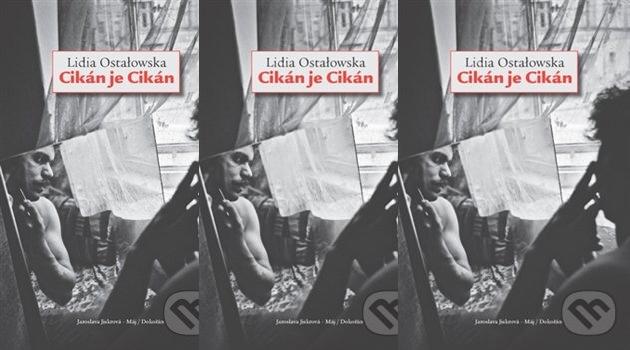Commentary: Polish reporter will discuss her book about Roma this week in Prague and Plzeň

Polish reporters are known even beyond the country’s borders, and currently their readership is growing more and more. Their success consists, among other things, in their imaginative use of the wide range of material that this particular genre, which lies on the border between journalism and literature, undoubtedly offers.
The saying “different strokes for different folks” is a more than apt definition of contemporary Polish reportage – each author has a unique voice, differing from one other in terms of narrative style and choice of topic. Besides Ryszard Kapuściński, that lover of exotic coastlines, and the longtime Czechophile Mariusz Szczygieł, Czech readers may be familiar with the name, for example, of the “father” of Polish literary reportage, Melchior Wańkowicz, or with Hanna Krall, whose famous interview with Marek Edelman, one of the leaders of the Warsaw Ghetto Uprising in 1943, is captured by the book Zdążyć przed Panem Bogiem (English title: Shielding the Flame).
Czech readers can get to know even more Polish reporters by reading the publication issued this year entitled Phenomenon: Polish Literary Reportage (Fenomén: polská literární reportáž – Michala Benešová, Renata Rusin Dybalska, Lucie Zakopalová and colleagues), as well as the collaboratoin of the Jaroslava Jiskrová-Máj and Dokořán publishing houses, which are systematically contributing to publishing in Czech all of the most illustrious names of contemporary Polish reportage (Wojciech Tochman, Witold Szabłowski, Paweł Smoleński and Margo Rejmer). From this fruitful publishing collaboration a book has also come out in Czech translation this year entitled A Gypsy is a Gypsy (Cikán je Cikán) from the pen of reporter Lidia Ostałowska, who will be the guest of what will be a fourth evening with Polish reporters in this year’s series on Wednesday, 14 September at 19:00 in Prague.
This unique project is organized by the Polish Institute in Prague in collaboration with the Václav Havel Library, and as one can infer from the name of the evening (“Roma, or Gypsies?” – “Romové, nebo Cikáni?”), the discussion will be about this particular book. If you miss the author in Prague, you can catch her at the Gallery of the European House of the Education and Research Library of the Plzeň Region (SVK PK) in Plzeň on 15 September (at 18:00) as part of its Meeting Literature project.
How did this author earn her place in the Polish literary sun, and why is it worth going to hear her speak? Born in Warsaw in 1954, Lidia Ostałowska first completed Polish studies at university there before beginning her writing career.
Her life’s work is closely connected with journalism – she first contributed to the women’s magazine Przyjaciółka and to the student magazine ITD. Her career as an essayist, however, was disrupted by the dictatorship, and as of the announcement of martial law in 1981, her voice disappeared from the newspapers, something that changed again after communism fell.
Ostałowska regularly contributes reportages to the daily Gazeta Wyborcza, which is liberally oriented and also one of the most important newspapers in Poland. It is perhaps surprising to realize how few titles she actually has to her name – Cygan to Cygan (A Gypsy is a Gypsy), Farby wodne (Water Colours) and Bolało jeszcze bardziej (It Hurt Even More), as well as the e-book Balanga w transie (Balanga in a Trance) make up the full list.
However, sometimes less is more, and the quality of this author’s reportages is testified to by the fact that her first two titles are also available in Czech translation. As for the topics of her reportages, she is most interested in people who represent some kind of minority, whether ethnic, national, or religious.
Her book Farby wodne (Water Colours) came out in Czech translation in 2014 and introduces us to the paintings produced by Dina Gottlieb for the infamous doctor at Auschwitz, Josef Mengele, who asked her to use her talent to create portraits of the Romani prisoners there. After the war, Gottlieb married the famous animator Art Babbitt and emigrated to the United States.
Gottlieb is, to this day, controversial in some parts of the world because in the 1990s she asked for those portraits to be returned to her ownership from their current location at the Auschwitz Museum. Water Colours is also strange because Ostałowska never actually personally met with its protagonist.
Overall, however, what must be underlined about the book is the important fact that its subject matter is that of Romani Holocaust victims. There are desperately few literary works, especially fictional ones, on that topic – in comparison with the Jewish Shoa, a truly negligible amount.
Given the voices being raised from time to time that doubt or even absolutely deny the racial murder of the Roma, such books represent a testimony that is more than necessary and valuable. As for A Gypsy is a Gypsy, it was originally published in the year 2000.
Through her reportage in that work, the author introduces us to the Roma once more, this time during the postcommunist era. She takes an interest in the countries that were once draped with the red robes of communism for 40 years (plus or minus), viewing them through the lens of how they promoted the growth (or the decline?) of Romani culture.
Ostałowska claims she was first captivated by the fate of the Roma in Romania, who began to turn up in Poland after 1989, most of them ending up on the streets. Besides Romania, readers will find themselves in a cruel Bulgarian prison or at a celebration of the holiday of Ederlezi in Yugoslavia, where the character of Rafet, to the sound of falling bombs, does his best to find the best lamb to buy – and the author also visits North Bohemia.
Not only does the book describe the various social conditions of the Romani minority, we also learn about many interesting Romani customs. Anybody who is curious about Romani notoriety regarding the theft of chickens, or how Romani girls go about demonstrating that they were actually virgins before their wedding nights, should certainly buy the book.
A Gypsy is a Gypsy does not attempt to persuade the reader of anything and is not a handbook on how to learn to love the Roma, but it can at the very least aid readers to better know and understand them. Ostałowska is a good guide through the Romani world, and meeting her could be quite beneficial in many respects.
The opinions published on news server Romea.cz do not necessarily reflect the opinions or standpoint of the editors of news server Romea.cz., Romano voďi magazine, or ROMEA, o.p.s.
